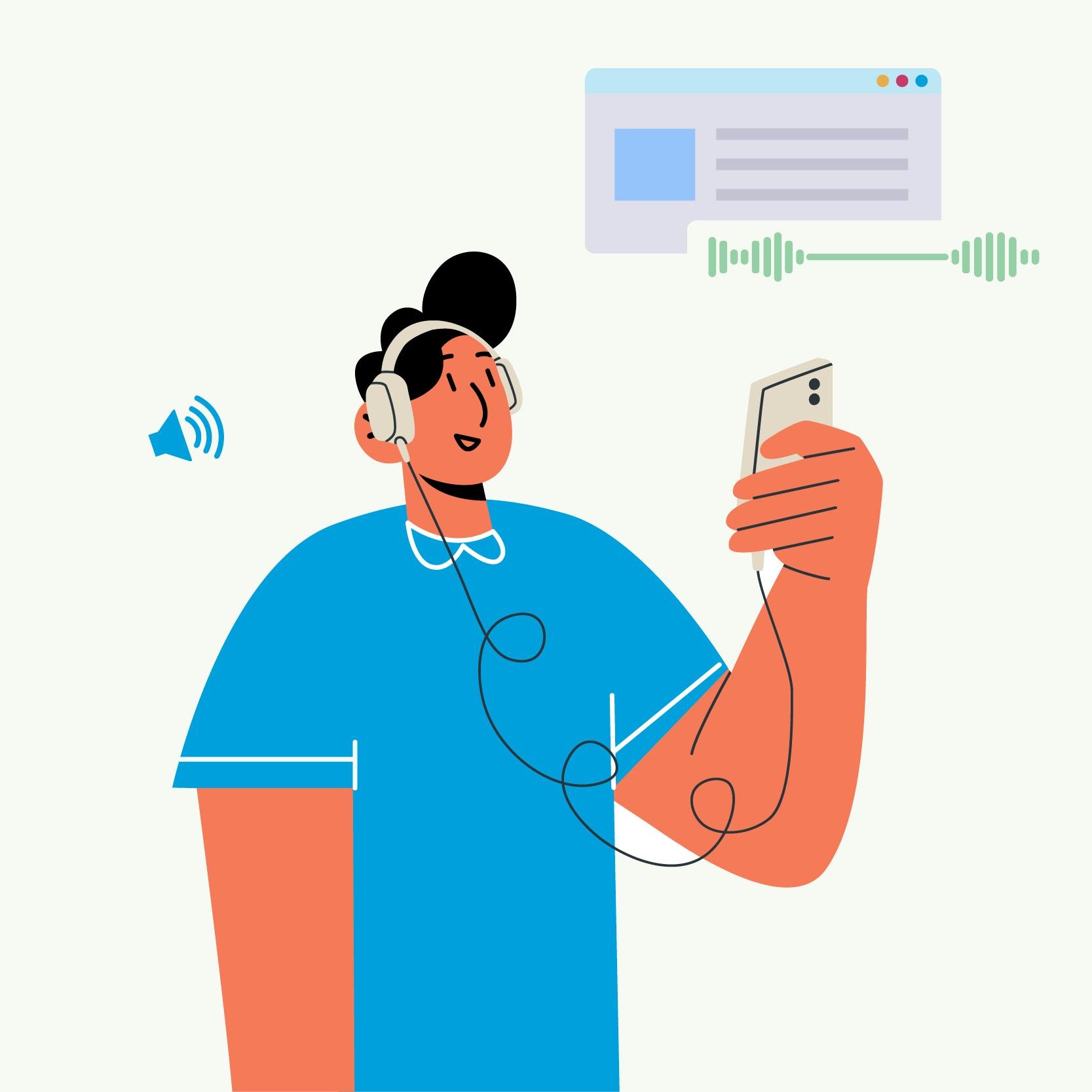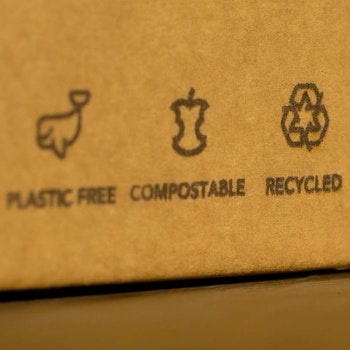
Testing the Power of Sonic Logos
Published on: June 29 2023
Our modern world is a symphony of sounds, yet many brands have not awoken to the potential of sonics.
The TV, radio, podcasts, the omnipresent chiming of our digital devices, the soft drone of home appliances, or the singing of birds outside our window; these often-overlooked aural elements subtly impact our mood, behaviors, and overall perception of our daily encounters. Yet most of us rarely stop to think about these sounds, or our quick and often emotional responses to them. It occurs intuitively and at the fringes of our awareness.
Brands have the potential to harness the power of sound in various innovative ways. On the many possible occasions we encounter a brand there are opportunities for it to have its own sounds. Obvious examples include advertising, digital apps and retail environments. But sometimes there are more unexpected places too. I was recently surprised upon using a Costa coffee branded vending machine when upon paying for my coffee the machine started playing sounds of a coffee shop!
Sonic branding presents an opportunity to establish unique auditory signatures that become as identifiable as a visual logo. Sound can be exploited in the form of audio ads disseminated through radio, podcasts, and streaming services, reaching a large and diverse audience. The deliberate design of product sounds can enhance the user experience, creating a more immersive interaction. A distinct brand voice can be crafted and used across automated phone systems and voice assistants, providing consistency across platforms. The creation of ambient soundscapes in physical spaces like stores or events can significantly elevate the customer experience. Finally, brands can engage their audiences through interactive sound experiences such as sound-based games or interactive audio advertisements.
Brands such as THX, Intel, T-Mobile, Microsoft and Apple pioneered the fast, emotional power of sound to create sonic logos for their brands. Brands create their own sonic logos, or audio branding, for several reasons. Sonic logos help establish brand recognition by creating a unique and memorable auditory identity. They also foster an emotional connection with consumers by evoking specific feelings or moods. Sonic logos differentiate brands in a crowded marketplace and ensure consistency across various platforms. They enhance memorability and adaptability, allowing brands to tailor their audio identity to different contexts. Ultimately, sonic logos are a strategic tool that harnesses the power of sound to create a deeper and more holistic brand experience.
And, like a visual logo, a brand’s sonic logo can become part of our lives for decades.
Brands have the potential to harness the power of sound in various innovative ways. On the many possible occasions we encounter a brand there are opportunities for it to have its own sounds. Obvious examples include advertising, digital apps and retail environments. But sometimes there are more unexpected places too. I was recently surprised upon using a Costa coffee branded vending machine when upon paying for my coffee the machine started playing sounds of a coffee shop!
Sonic branding presents an opportunity to establish unique auditory signatures that become as identifiable as a visual logo. Sound can be exploited in the form of audio ads disseminated through radio, podcasts, and streaming services, reaching a large and diverse audience. The deliberate design of product sounds can enhance the user experience, creating a more immersive interaction. A distinct brand voice can be crafted and used across automated phone systems and voice assistants, providing consistency across platforms. The creation of ambient soundscapes in physical spaces like stores or events can significantly elevate the customer experience. Finally, brands can engage their audiences through interactive sound experiences such as sound-based games or interactive audio advertisements.
Brands such as THX, Intel, T-Mobile, Microsoft and Apple pioneered the fast, emotional power of sound to create sonic logos for their brands. Brands create their own sonic logos, or audio branding, for several reasons. Sonic logos help establish brand recognition by creating a unique and memorable auditory identity. They also foster an emotional connection with consumers by evoking specific feelings or moods. Sonic logos differentiate brands in a crowded marketplace and ensure consistency across various platforms. They enhance memorability and adaptability, allowing brands to tailor their audio identity to different contexts. Ultimately, sonic logos are a strategic tool that harnesses the power of sound to create a deeper and more holistic brand experience.
And, like a visual logo, a brand’s sonic logo can become part of our lives for decades.
Yet, developing a powerful sonic logo that can stand the test of time isn’t easy. Research and getting real consumer responses to your creative options during the development of a sonic logo is important.
Human responses to sound are impressively swift, outpacing our reactions to visual stimuli. Sounds can act as alarms that rapidly grab our attention, or, conversely soothe us or reassure us that everything is well. Before we fully comprehend a sound’s source or significance, we have already had an instinctive emotional reaction, either positive or negative. This immediate response is crucial as it sets the emotional tone and shapes our expectations for an ensuing experience.
Despite the subconscious nature of our reactions to sound, and the fact that many individuals lack the vocabulary and capacity to evaluate their responses to sounds, sound often falls to the wayside in product and experience design. Consequently, we find ourselves in a world saturated with often abrasive, unnecessary noise that detracts from experiences, leading individuals to disengage entirely.
As Steve Keller, Sonic Strategy Director for Studio Resonate/SXM Media, explains, “When it comes to testing sonics of all kinds, it’s difficult to get an accurate read on human reactions and associations using explicit measures alone. Implicit testing is necessary to explore our responses to sound at a System One level, where perception, emotion, meaning, and memory live. As a result, it provides more accurate information on which to make “sound decisions.”
Nevertheless, methods, focusing on implicit and response-timed evaluations can alleviate these challenges. These methods are inherently beneficial for the evaluation of sonics due to:
Human responses to sound are impressively swift, outpacing our reactions to visual stimuli. Sounds can act as alarms that rapidly grab our attention, or, conversely soothe us or reassure us that everything is well. Before we fully comprehend a sound’s source or significance, we have already had an instinctive emotional reaction, either positive or negative. This immediate response is crucial as it sets the emotional tone and shapes our expectations for an ensuing experience.
Despite the subconscious nature of our reactions to sound, and the fact that many individuals lack the vocabulary and capacity to evaluate their responses to sounds, sound often falls to the wayside in product and experience design. Consequently, we find ourselves in a world saturated with often abrasive, unnecessary noise that detracts from experiences, leading individuals to disengage entirely.
As Steve Keller, Sonic Strategy Director for Studio Resonate/SXM Media, explains, “When it comes to testing sonics of all kinds, it’s difficult to get an accurate read on human reactions and associations using explicit measures alone. Implicit testing is necessary to explore our responses to sound at a System One level, where perception, emotion, meaning, and memory live. As a result, it provides more accurate information on which to make “sound decisions.”
Nevertheless, methods, focusing on implicit and response-timed evaluations can alleviate these challenges. These methods are inherently beneficial for the evaluation of sonics due to:
- The ability to capture subconscious reactions, which often occur faster than conscious thought processes.
- Their aptitude for revealing immediate emotional responses, which are more accurate than post-rationalized or introspective responses.
- The reduction of cognitive bias in responses, a common issue in traditional survey-based methods.
- The advantage of mimicking natural contexts in testing, which result in more realistic reactions.
- The potential to uncover emotional resonance, an essential aspect for creating universally appealing sonic elements.
At CloudArmy, we’ve delved into this intriguing soundscape, testing a variety of sounds including sonic logos, brand themes, and audio ads. Through our work, we’ve observed the remarkable effects that sound can have on people’s experiences and behaviors. We have the expertise to help answer a multitude of sound-related questions. For instance: Which voice is right for our brand? Which sounds are best for our smartphone app? How can we select the best creative option for our radio or podcast ads? And which music is best for our TV ads or YouTube videos?
Interestingly, one of the most frequent enquiries we receive relates to sonic logos. Given their rising popularity and their crucial role in establishing an auditory brand identity, we’ve developed a standardized test approach specifically tailored for sonic logos. Based on our extensive experience and client feedback, we created a testing capability we call ‘Sonic Reactor’.
Sonic Reactor measures the intuitive, System 1 responses of your customers to your sonic logo and brand theme ideas. It comprises a suite of exercises, which our neuroscience consultants select according to the nature of your sounds and the research questions you have.
Our robust testing platform, Reactor, can run Sonic Reactor tests on desktop, laptop or mobile devices. As we have check-methods to ensure that participants can genuinely hear the sounds from their device.
We also typically add in direct, self-report questions at the end, asking for their most preferred sound and why, and least preferred sound and why. Often insights can be gleaned by comparing and contrasting these more conscious and deliberate ‘System 2’ responses with people’s fast, intuitive ‘System 1’ responses.
Sonic Reactor can also be used to test other forms of audio - such as sonics for apps, voices, experiences, retail atmospherics and product sounds.
Sound is a compelling tool in the arsenal of any brand looking to foster deeper connections with its audience. As the world seeks to turn down the volume on ‘Sonic Trash’, brands must learn to truly listen to the impact of sound on their experiences and decisions. Let’s make the soundscape of our lives a harmonious one.
Interestingly, one of the most frequent enquiries we receive relates to sonic logos. Given their rising popularity and their crucial role in establishing an auditory brand identity, we’ve developed a standardized test approach specifically tailored for sonic logos. Based on our extensive experience and client feedback, we created a testing capability we call ‘Sonic Reactor’.
Sonic Reactor measures the intuitive, System 1 responses of your customers to your sonic logo and brand theme ideas. It comprises a suite of exercises, which our neuroscience consultants select according to the nature of your sounds and the research questions you have.
Our robust testing platform, Reactor, can run Sonic Reactor tests on desktop, laptop or mobile devices. As we have check-methods to ensure that participants can genuinely hear the sounds from their device.
We also typically add in direct, self-report questions at the end, asking for their most preferred sound and why, and least preferred sound and why. Often insights can be gleaned by comparing and contrasting these more conscious and deliberate ‘System 2’ responses with people’s fast, intuitive ‘System 1’ responses.
Sonic Reactor can also be used to test other forms of audio - such as sonics for apps, voices, experiences, retail atmospherics and product sounds.
Sound is a compelling tool in the arsenal of any brand looking to foster deeper connections with its audience. As the world seeks to turn down the volume on ‘Sonic Trash’, brands must learn to truly listen to the impact of sound on their experiences and decisions. Let’s make the soundscape of our lives a harmonious one.







